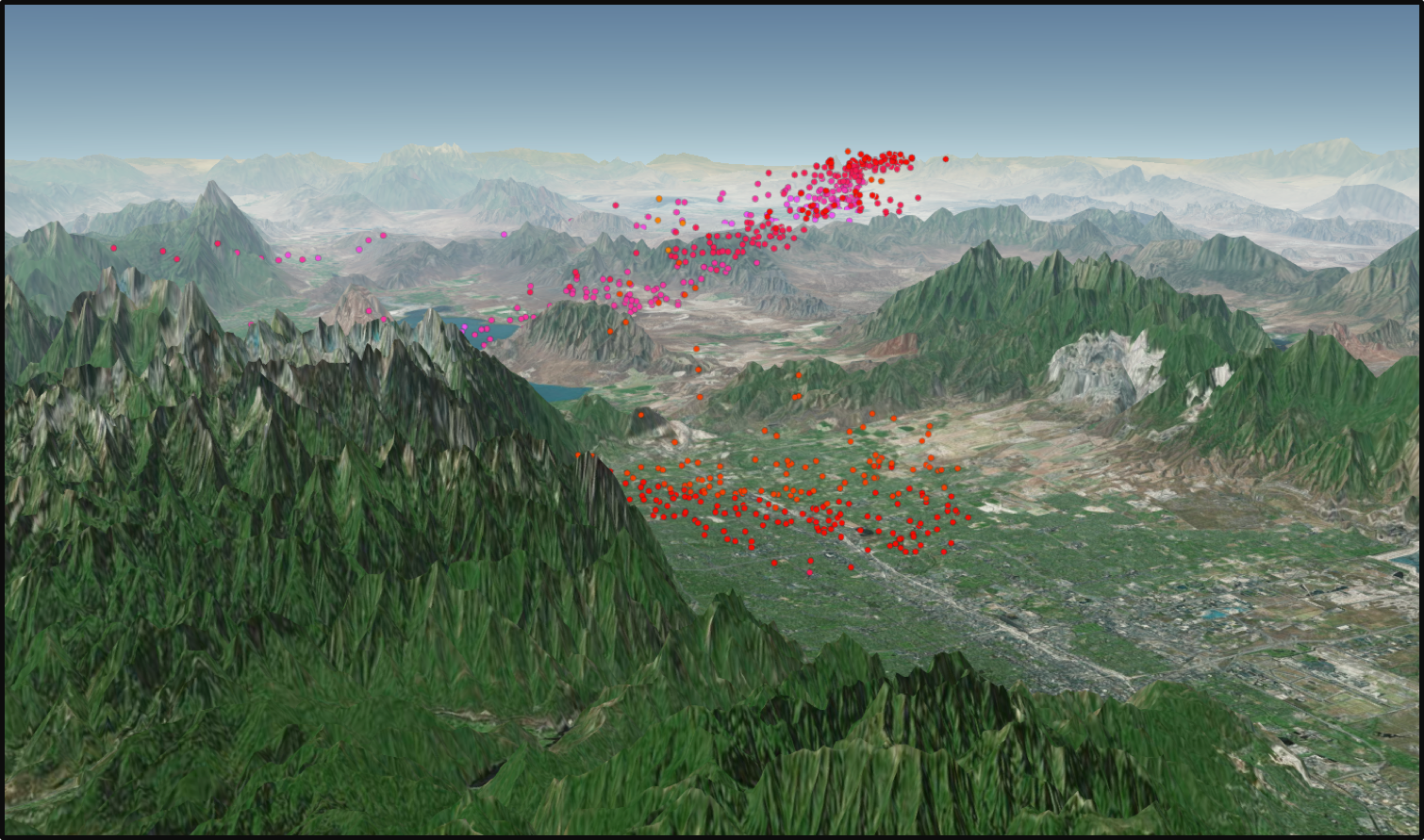Atmospheric Transport Modeling
Atmospheric modeling is key to relate observed variations in atmospheric CO2 and CH4 to the sources and sinks of carbon.
CO2-USA will construct a cross-city, urban scale atmospheric modeling system based upon the Lagrangian Particle Dispersion Modeling (LPDM) approach (Fig. 1) (Lin et al. 2012). Through comparisons to a combination of tracer releases and meteorological + tracer observations, we will seek to understand current capabilities and uncertainties in the atmospheric modeling system for cities in different physical settings. This step is important, since while LPDMs have emerged as a powerful tool to interpret variations in CO2 and CH4 mixing ratios and extract carbon fluxes from these variations, most LPDMs in use for greenhouse gas (GHG) work have been assessed at scales larger than a city, and the required meteorological drivers may have problems at the city scale.

The Stochastic Time-Inverted Lagrangian Transport (STILT) model (Lin et al. 2003) is one of the main dispersion modeling tools used for the GHG source inversions. This model was originally based on the HYSPLIT dispersion model developed by the National Oceanic and Atmospheric Administration’s Air Resources Laboratory (Stein et al. 2015). Over time, the STILT model code has evolved, adding new features focused on the inverse problem (e.g. transport error quantification, mass conservation, deep convection). As part of CO2-USA, we will incorporate the new scientific advances available in STILT into the HYSPLIT code and evaluate these new features against the tracers using an expanded tracer release database (DATEM). The new dispersion code will be supported and updated by NOAA-ARL and made readily available through ARL’s model repository.
This model-data framework is intended to be highly accessible, scalable, and operable, and thus readily applied by anyone to a large number of urban studies of CO2 and CH4. Further development of HYSPLIT-STILT, and rollout to the community, are major foci of this proposal.
Key contacts: John Lin (John.Lin at utah.edu)
Ariel Stein (ariel.stein at noaa.gov)
Chris Loughner (christopher.loughner at noaa.gov)
Lin, J. C., Gerbig, C., Wofsy, S. C., Andrews, A. E., Daube, B. C., Davis, K. J. and Grainger, C. A.: A near-field tool for simulating the upstream influence of atmospheric observations: the Stochastic Time-Inverted Lagrangian Transport (STILT) model, J. Geophys. Res., 108(4493), doi:10.1029/2002JD003161, 2003.
Lin, J. C., Brunner, D., Gerbig, C., Stohl, A., Luhar, A. K. and Webley, P. W.: Lagrangian Modeling of the Atmosphere, Geophys. Monogr., 200, 349, 2012.
Stein, A. F., Draxler, R. R., Rolph, G. D., Stunder, B. J. B., Cohen, M. D. and Ngan, F.: NOAA’s HYSPLIT Atmospheric Transport and Dispersion Modeling System, Bull. Am. Meteorol. Soc., 96(12), 2059–2077, doi:10.1175/BAMS-D-14-00110.1, 2015.